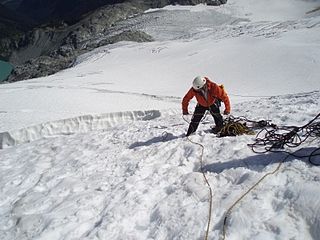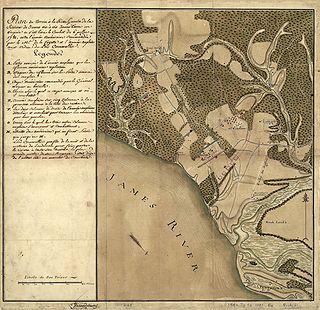
Clymer is a town in Chautauqua County, New York, United States. The population was 1,698 at the 2010 census. The town is named for George Clymer, a signer of the Declaration of Independence. Clymer is located in the southwest part of the county.

Cortland is a city in Cortland County, New York, United States of America. Known as the Crown City, Cortland is located in New York's Southern Tier region. As of the 2010 census, the city had a population of 19,204. It is the county seat of Cortland County.

Florence is a town in Oneida County, New York, United States. The population was 1,025 at the 2010 census. The town is named after the city Florence in Italy.
"Elegy" is episode 20 of the American television anthology series The Twilight Zone. It originally aired on February 19, 1960 on CBS.
Jim Wickwire is the first American to summit K2, the second highest mountain in the world. Wickwire is also known for surviving an overnight solo bivouac on K2 at an elevation above 27,000 ft or 8,200 m; considered "one of the most notorious bivouacs in mountaineering history".

Crevasse rescue is the process of retrieving a climber from a crevasse in a glacier. Because of the frequency with which climbers break through the snow over a crevasse and fall in, crevasse rescue technique is a standard part of climbing education.

The Battle of Green Spring took place near Green Spring Plantation in James City County, Virginia during the American Revolutionary War. On July 6, 1781 United States Brigadier General "Mad" Anthony Wayne, leading the advance forces of the Marquis de Lafayette, was ambushed near the plantation by the British army of Earl Charles Cornwallis in the last major land battle of the Virginia campaign prior to the Siege of Yorktown.

The Yorktown or Virginia campaign was a series of military maneuvers and battles during the American Revolutionary War that culminated in the decisive Siege of Yorktown in October 1781. The result of the campaign was the surrender of the British Army force of General Charles Earl Cornwallis, an event that led directly to the beginning of serious peace negotiations and the eventual end of the war. The campaign was marked by disagreements, indecision, and miscommunication on the part of British leaders, and by a remarkable set of cooperative decisions, at times in violation of orders, by the French and Americans.

The Southern theatre of the American Revolutionary War was the central area of operations in North America in the second half of the American Revolutionary War. During the first three years of the conflict, the largest military encounters were in the north, focused on campaigns around the cities of Boston, New York, and Philadelphia. After the failure of the Saratoga campaign, the British largely abandoned operations in the Middle Colonies and pursued peace through subjugation in the Southern Colonies.

Nancy Marie Wickwire was an American actress known for roles on several daytime soap operas.

The Seven Mile River or Sevenmile River is a 9.6-mile-long (15.4 km) stream in central Massachusetts. It heads at Browning Pond, at the Oakham and Spencer border, and travels south through Spencer, following a short distance from State Route 31. It crosses under Route 31 the highway becomes Pleasant Street, then continues south along Old Meadow Road and under State Route 9 near the junction of State Route 49. It then parallels Route 9 to its south until it joins the East Brookfield River between Lake Lashaway and Quaboag Pond.

The Sugden Reservoir is a Massachusetts reservoir located in Spencer, Massachusetts. It forms the headwaters of Shaw Brook, which is a tributary to Turkey Hill Creek, a major tributary to the Seven Mile River. This water body is part of the Chicopee River Watershed.

The Battle of Spencer's Ordinary was an inconclusive skirmish that took place on 26 June 1781, late in the American Revolutionary War. British forces under Lieutenant Colonel John Graves Simcoe and American forces under Colonel Richard Butler, light detachments from the armies of General Lord Cornwallis and the Marquis de Lafayette respectively, clashed near a tavern at a road intersection not far from Williamsburg, Virginia.
Chester "Chet" L. Wickwire was chaplain emeritus of the Johns Hopkins University. He was a prominent fighter for civil rights and an international peace activist. Reverend Wickwire was remembered as a "consummate humanist" after his death.

Charles Cornwallis, 1st Marquess Cornwallis KG, PC, styled Viscount Brome between 1753 and 1762 and known as The Earl Cornwallis between 1762 and 1792, was a British Army general and official. In the United States and the United Kingdom he is best remembered as one of the leading British generals in the American War of Independence. His surrender in 1781 to a combined American and French force at the Siege of Yorktown ended significant hostilities in North America. He also served as a civil and military governor in Ireland and India; in both places he brought about significant changes, including the Act of Union in Ireland, and the Cornwallis Code and the Permanent Settlement in India.

British General Charles Cornwallis, the 1st Marquess Cornwallis was appointed in June 1798 to serve as both Lord Lieutenant of Ireland and Commander-in-Chief of Ireland, the highest civil and military posts in the Kingdom of Ireland. He held these offices until 1801.

The 1792 Siege of Seringapatam was a battle and siege of the Mysorean capital city of Seringapatam (Srirangapatna) at the end of the Third Anglo-Mysore War. An army led by Charles, Earl Cornwallis consisting of British East India Company and British Army forces, along with allied forces from the Maratha Empire and the Nizam of Hyderabad, arrived at Seringapatam on 5 February 1792, and after less than three weeks of battle and siege, forced Tipu Sultan to capitulate. With his agreement to the Treaty of Seringapatam on 18 March 1792, the war came to an end.

British General Charles Cornwallis, the Earl Cornwallis, was appointed in February 1786 to serve as both Commander-in-Chief of British India and Governor of the Presidency of Fort William, also known as the Bengal Presidency. He oversaw the consolidation of British control over much of peninsular India, setting the stage for the British Raj. He was also instrumental in enacting administrative and legal reforms that fundamentally altered civil administration and land management practices there. According to historian Jerry Dupont, Cornwallis was responsible for "laying the foundation for British rule throughout India and setting standards for the services, courts, and revenue collection that remained remarkably unaltered almost to the end of the British era."

Charles, Earl Cornwallis (1738–1805) was a military officer who served in the British Army during the American War of Independence. He is best known for surrendering his army after the 1781 Siege of Yorktown, an act that ended major hostilities in North America and led directly to peace negotiations and the eventual end of the war.

The 1890 House Museum is a historic house located on Tompkins Street in Cortland, New York. It was built in 1890 for industrialist Chester F. Wickwire (1843–1910), and was designed by architect Samuel B. Reed. Chester Wickwire lived in the home from 1890 until his death in 1910. He made his fortune by founding and managing the Wickwire Brothers Company in Cortland, NY, which produced wire products such as horse muzzles, seed spreaders, insect screens, and similar products for rural Americans.

















